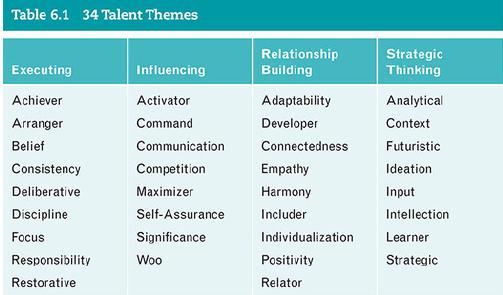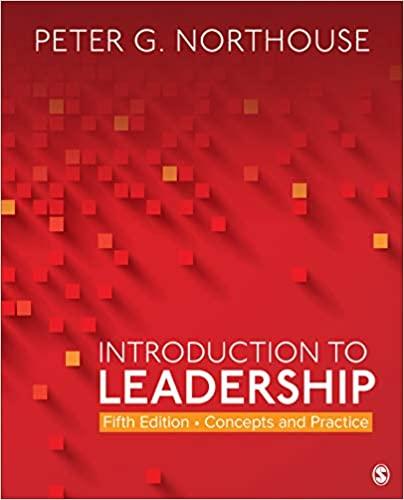Sociologist Dr. Bren Brown is a highly recognized thought leader, acclaimed best-selling author, teacher, researcher, and sought-after
Question:
Sociologist Dr. Brené Brown is a highly recognized thought leader, acclaimed best-selling author, teacher, researcher, and sought-after speaker who has built a small empire and a very large following around the study of such difficult topics as shame, vulnerability, courage, and empathy.
A Texan who prefers “shit kickers” (cowboy boots), jeans, and clogs to business attire, Brené is a professor of sociology at the University of Houston. She has authored five number-one New York Times best-selling books. Her TED Talk, “The Power of Vulnerability,” is one of the top five most-accessed TED Talks ever with more than 39 million views. In 2019, she hosted her first Netflix special, Brené Brown:
The Call to Courage (Brown, 2019a). Though Brené is more likely to bill herself as simply a “research professor,” she is also an entrepreneur, CEO, mother, and wife. She founded The Daring Way, a training and certification program for helping professionals who want to facilitate her work on vulnerability, courage, shame, and empathy in their practices.
Brené’s path to where she is today began when she was a child. Cassandra Brené Brown’s family moved several times—from Houston to New Orleans to Houston to Washington, DC, and back to Houston. Fitting in and feeling a sense of belonging was not easy for her. After moving to New Orleans, Brown’s parents changed neighborhoods and enrolled her in a Catholic school despite their own Episcopal faith. Later, when Brené was a teenager, her family returned to Houston, and she was once again the new kid in school. Her efforts to fit in fell short, and that feeling of belonging remained elusive.
Deepening Brené’s feelings of separateness was the disintegration of her parents’ marriage during her high school years, shaking the only real sense of belonging she had. Despite this, Brené was a plucky, curious young girl who grew to be tenacious and outspoken.
Reflecting back, she credits these formative years in helping shape her later success. “I owed my career to not belonging. First as a child, then as a teenager. I found my primary coping mechanism for not belonging in studying people. I was a seeker of pattern and connection. I knew if I could recognize patterns in people’s behaviors and connect those patterns to what people were feeling and doing, I could find my way,” she said. “I used my pattern recognition skills to anticipate what people wanted, what they thought, or what they were doing. I learned how to say the right thing or show up the right way. I became an expert fitter-in, a chameleon” (Brown, 2017, p. 16).
The years after high school were unsettled years of rebellion for Brené; she hitchhiked across Europe, bartended, and waitressed—gaining a variety of life experiences and admittedly engaging in an array of self-destructive behaviors. After having dropped out of college earlier, she graduated at 29 at the top of her class with a bachelor’s degree in social work from the University of Texas at Austin and immediately entered graduate school at the University of Houston where she completed both a master’s and doctoral program.........
Questions
1. Based on the case study narrative and what you learned about Brené and her work from the TED Talk videos:
a. Based on the strengths listed in Table 6.1, select five strengths that you think are descriptive of Brené Brown. Explain your answer.
b. Based on your answer to the previous question, which of the four domains of leadership strengths found in Table 6.2 (executing, influencing, relationship building, or strategic thinking) do you think best apply to Brené? Which domain do you believe is her strongest?
Explain.
2. Based on the case study narrative and what you learned about Brené and her work from the TED Talk videos:
a. Which of the VIA character strengths (Table 6.3) would you attribute to Brené Brown?
b. On a scale from 1 (low) to 5 (high), how would you rate Brené in each classification of the VIA (Table 6.3)? Explain your ratings.
3. In applying the CAPP perspective, strengths are defined as “the things that we are good at and that give us energy when we are using them.” Based on the definitions for the CAPP categories:
a. Identify and list Brené Brown’s “realized strengths.”
b. What would you consider to be Brené’s “unrealized strengths”?
c. Can you identify any “learned behaviors” as defined by this model?
d. Can you identify any “weaknesses” as defined by this model?
Data from Tables



Step by Step Answer:

Introduction To Leadership Concepts And Practice
ISBN: 9781544351599
5th Edition
Authors: Peter G Northouse





